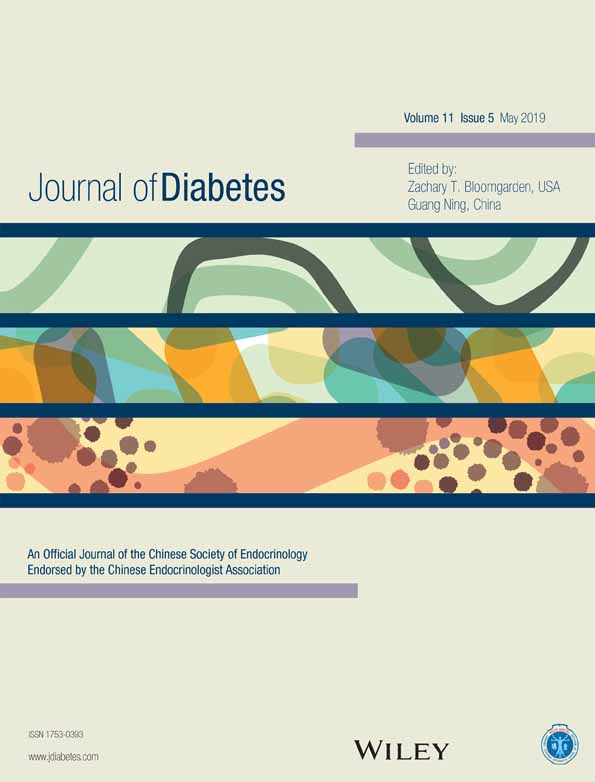Effects of preoperative hepatitis B virus infection, hepatitis C virus infection, and coinfection on the development of new-onset diabetes after kidney transplantation
肾移植术前乙肝病毒感染、丙肝病毒感染及其共感染对移植后新发糖尿病发病的影响
Abstract
enBackground
The effects of preoperative hepatitis B virus (HBV) infection, hepatitis C virus (HCV) infection, and HBV plus HCV coinfection on the development of new-onset diabetes after transplantation (NODAT) remain unexplored in kidney transplant recipients (KTRs). This study examined the association between preoperative viral status (i.e., HBV, HCV, and HBC + HCV infection) and incident NODAT in a large population of Chinese KTRs.
Methods
This population-based retrospective cohort study enrolled 557 subjects who underwent kidney transplantation between 1993 and 2014 at Zhongshan Hospital. Pre-, peri-, and postoperative data were extracted and analyzed. Viral status was defined by serological results for hepatitis B surface antigen and anti-HCV antibody. The cumulative incidence of NODAT was compared across four groups of KTRs with different viral status. Multivariate Cox regression models were used to estimate the effects of HBV, HCV, and HBC + HCV infection on incident NODAT after adjusting for important confounders.
Results
Patients seropositive for HCV (both HCV monoinfection and HBC + HCV coinfection) had a significantly higher cumulative incidence of NODAT than KTRs who were not infected with HCV (P < 0.05 for both). However, only HCV infection alone was found to be a risk factor for NODAT, increasing the NODAT risk 3.03-fold (95% confidence interval 1.77-5.18; P < 0.001). There was no independent correlation between HBV infection (alone or combined with HCV) and incident NODAT in KTRs.
Conclusions
Preoperative HCV infection significantly increased the risk of NODAT in Chinese KTRs, whereas HBV infection and HBC + HCV coinfection were not correlated with NODAT development.
Abstract
zh摘要
背景
在肾移植受者中,术前乙肝病毒(hepatitis B virus,HBV)感染、丙肝病毒(hepatitis C virus,HCV)感染及其共感染对其移植术后新发糖尿病(new-onset diabetes after transplantation,NODAT)发病的影响还未完全阐明。因此,本研究的目的在于探索中国肾移植受者人群中,术前病毒感染情况(即HBV感染、HCV感染以及HBV+HCV共感染)与术后NODAT发生情况之间的关系。
方法
本研究为回顾性队列研究,纳入的研究对象为1993年至2014年在中山医院接受同种异体肾移植术的557例肾移植受者,并收集其术前、围术期及术后资料进行分析。病毒感染情况按照其术前乙肝病毒表面抗原及抗丙肝病毒抗体的血清学检测结果来定义,并据此将入组患者分为4组(HBV单独感染组、HCV单独感染组、共感染组以及未感染肝炎病毒组)。首先,组间比较其NODAT累计发病率;接着,使用多因素COX回归分析逐步校正混杂因素,分别探索HBV感染、HCV感染以及共感染对NODAT发病的独立影响。
结果
与未感染HCV的患者(包括HBV单独感染组和未感染组)相比,感染HCV的患者(包括HCV单独感染组和共感染组)中NODAT累计发病率显著升高(P值均< 0.05)。进一步校正混杂因素后,发现只有术前HCV感染独立增加NODAT发病风险3.03倍,(95%置信区间 1.77-5.18,P < 0.001);而术前HBV感染,不论是否同时合并HCV感染,均不独立影响NODAT发病风险。
结论
中国肾移植受者人群中,术前HCV感染是发生NODAT的独立危险因素;未发现术前HBV感染或HBV+HCV共感染与NODAT发病存在显著关联。




